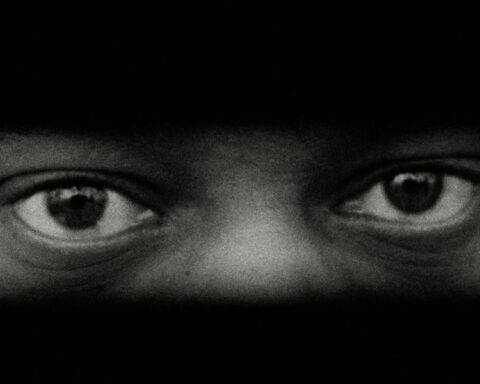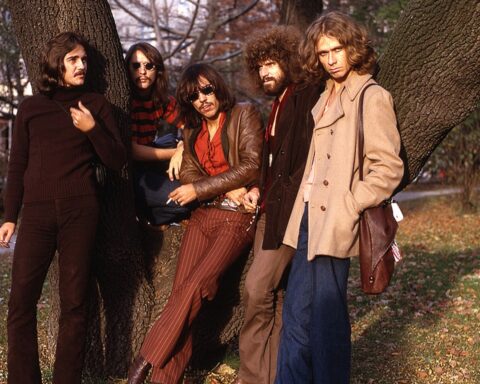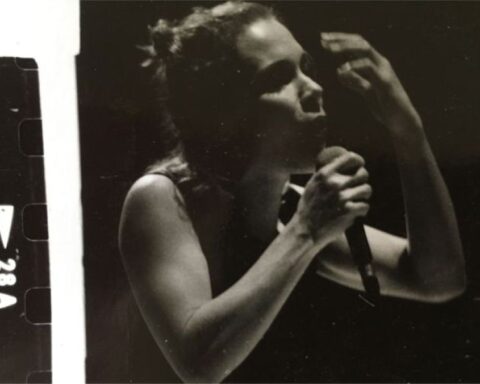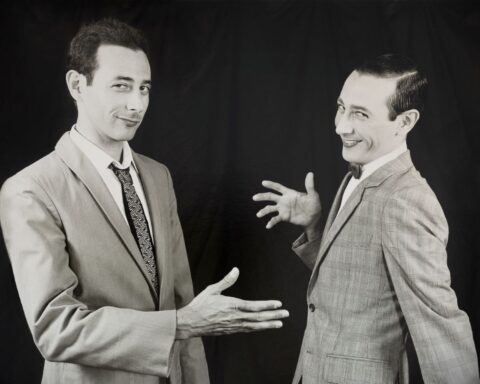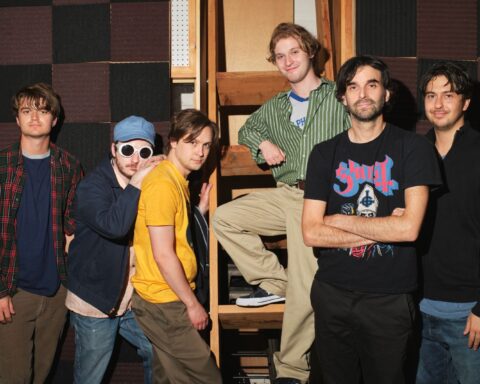n November 2007 I traveled to the Kassler Dokumentarfilm und Videofest to present my installation piece, spin. These are my thoughts on the festival and the city of Kassel, Germany.
The first thing you see when you emerge from the Hauptbahnhof (main train station) in Kassel is the Hotel Reiss, which looks like it was once the centre of town. An abandoned hotel on a forgotten corner, it has seen better days…in the Sixties, before the main shopping area picked itself up and moved to the pedestrian square a few blocks away. An unknown artist has mounted a diving board on the hotel’s roof—perfectly positioned for a swan dive to the street below. Welcome to the city the Brothers Grimm made home.
Kassel has the air of the guy once voted most likely to succeed, who, through a series of unfortunate events and a bad marriage or two, is now a tired middle-aged man with a sports car and a few prized possessions. Every five years Documenta comes to town, the city comes alive, and then it rolls over and goes back to sleep. Once a year, Dokfest brings with it an impressive international lineup of films that play at the local repertory cinemas.
Kassel is also a city of accidents and missed potential. A WWII bombing run meant to destroy a military industrialist’s mansion was somehow blown off course. A freak thermal, or maybe a gust of wind, split the bombers directly over the property—the bombs fell on the surrounding neighbourhoods, flattening everything before and after. The mansion, and the hill it sits on, remain intact in the centre of town.
On a lunch-break one afternoon, a bubble rises in my psyche. It is a word, I can’t remember its meaning … traurig. I ask my host, Anja, a 22-year-old art student, what it means. “Sadness,” she replies, and I feel as though this bubble has come from the city itself. It is old and weathered, and the reconstructive surgery has left the place a monstrous freak with a few beautiful limbs stitched together with concrete skin grafts. A swan it will never be.
Dokfest, a five-day affair every November, runs out of the local repertory cinemas. The festival’s strength is its eclectic mix of experimental short form documentary and video art alongside an international mix of long form docs. Within the larger programme sits “Splice In,” a programme designed to insert other perspectives into an ongoing media discourse. This year’s focus had special resonance for Canadians, being a complex mix of works about Afghanistan; a public debate about troop deployment, similar to the one in Canada, was taking place in Germany at the time. The programme spotlighted the work of Afghani women filmmakers—according to the festival programmers, a strikingly short history, only having begun in 2001—and dealt with issues that ranged from the particular (e.g. forced marriage) to the larger political landscape: women ascending to office, and the battle against corruption.
Monitoring, the installations programme, fits into the loosely defined category of “Media Art.” The installations are housed in the KulturBahnhof, a two-story exhibition space located in a side building just off the Hauptbahnhof—the former main train station, which also houses one of the three screening venues, the Bali Kinos.
The installation programme is well integrated into the rest of the festival; the experimental focus of a good proportion of the film and video program prevents the installations from being isolated. While not curated by theme, the exhibition included a wide variety of projects ranging from the mobile (i.e. cell phones, wireless technology) to video installations. But many of the “media art” offerings still fell into a category of work that can’t make up its mind: am I art or am I a design brief? Am I sculpture, or am I a video game?
The project Mobile Gaming, for example, is little more than a video game that uses the distributed technology of five mobile phones instead of the central unit of a Playstation. It offers the opportunity to play three possible children’s games: a version of broken telephone, a roulette-type game and a version of musical chairs using phones in the place of chairs. In this context there is no conceptualism to have transformative power; the phones remain phones—handheld devices with screens and dial pads. The games don’t offer the opportunity to explore ideas outside the realm of the game, and offer no exploration of themes related to communication or communication devices.
Melanie Manchot’s Shave is projected as a larger-than-life image of a man having his chest shaved. A recurrent splashing noise steers the viewer’s gaze back to the centre of the room, to a video of a bowl in which the used razor is being continually rinsed synchronously with the projection. This action takes place on a monitor into which one peers from above, as if into the real bowl. With each stroke a hairless chest emerges, with the occasional nick, scratch and trail of blood. The work is so visceral it provokes very physical and emotional reactions. You can hear the straight blade coming in contact with the skin, laying bare associations made about gender, cleanliness, faith and observance through the daily ritual of shaving.
It is good to watch Aurelie Garon’s piece C’est un bruit qui est lá, qui permet de respirer on dirait (It seems it’s a noise that allows you to breathe) while realizing that oxygen gives us life but the act of respiration causes our tissues to oxidize and deteriorate over time. It is this paradox that Garon’s installation captures with a projection of two men fighting without purpose or determination. Neither scores a TKO; neither goes down; the fight continues, half-hearted, at a stalemate. The violence is futile. In front of the projection is a record player. The video is being played from the vinyl itself, a device of Garon’s invention, but the player turns in the opposite direction than it should, causing the needle to slowly etch away the image, degrading it slightly with each play. This piece is striking for its refined sensibility, its clever use of analogue media to describe the ephemerality of the digital signal. At the same time this ugly scene manages to touch on the sublime paradox at the centre of life.
Erik Olofsen’s Public Figures was the recipient of the 2,500 Golden Cube Award. A scrolling projection of a train platform shot by a high-speed camera from a train as it enters the station, it captures the waiting passengers in a moment usually seen in the blink of an eye. In this projection, they scroll past slowly, almost suspended in time. No doubt there is something alluring about the mysterious and close-to-frozen subjects staring blindly into or past the unseen camera, but despite the projection’s beauty, this installation left me cold. I wanted something more from it than an eerie feeling of intrusion. I wanted to feel that something more than a specialized camera made this moment possible, that there was some agency within the image.
Toronto-based Michael Awad, using high-speed cameras of his own design plucked from existing military and commercial applications, also makes continuous exposures of large public spaces and streetscapes. While his works consist of still images instead of large-scale projections, they manage to be more compelling. They are not a straight use of available technology; each print contains a measure of subjectivity and commentary on the nature of urbanity. Awad’s images compress or expand time and space, depending on his gaze. He is a keen observer of urban life, and the weight of that experience is present in each of his images. By contrast, Olofsen’s Public Figures is a snapshot.
Kassel may never be a swan, but, you can’t call something with a 24-year history an accident; there is a sophisticated audience that keeps the festival running. On the opening night of Monitoring, about 400 people went through the KulturBahnhoff. In this city 8,000 smaller than Saskatoon, there is an audience that outpaces any given Toronto audience for experimental film or contemporary art … at three venues a night.




